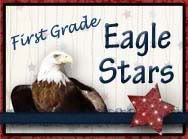Math Tips for Parents of First Graders
In first grade, kids move from object-based, hands-on math, to more standard pencil-and-paper. Children still need visual and tactile learning in the mix, but they also need to start transferring many of their mathematical ideas onto paper. Here are some things you can do at home, to help your child make the leap.
- Practice counting forward to and backward from 120, and forward or backward between any two numbers under 120. Practice when your child is bored (such as in a grocery store line or during a long car ride). Lots of praise encourages repeat performances. Count by twos, fives, and tens as well. You can begin this by using Lego-type blocks: hook multiple sets of two or five together, then count by these increments. Challenge counting practice with numbers up to and down from 1000.
- Flip through a magazine or catalog with your child, pointing out numbers and asking your child to read them. Or, reverse the exercise by naming a number and asking him/her to find it.
- Part of understanding numbers is being able to represent them in multiple ways, using words, models, and number expressions (For example, a child might describe the number 4 as one more than three, 2+2, 4 dolls, and "my apartment number.") To practice this, play "Guess the Number" using index cards with numbers written on one side. Your child chooses a number and then tries to make you guess it by giving descriptions without actually saying the number. Take turns.
- Cook using printed recipes to teach fractions. Your child can help read the ingredient amounts and then measure. Demonstrate fractions by showing how 1/4 cup of water, poured into a 1 cup container four times, fills it up.
- Create word problems. "If I want to eat two cookies, and you want three, how many do we need?" Use number magnets or pencil and paper to turn these word problems into number sentences. Verbalize the operation of, "Two plus three equals five." Discuss your child's thinking and encourage him/her to explain how your child knew the answer. This is an important strategy for helping your child identify and use learning strategies.
- Use a clock to time favorite activities. "You may watch TV from now, 6:00 (point at the numbers on the clock) until 6:30." Then, show your child when it's 6:30
- When playing games, take the opportunity to model the use of ordinal numbers. List who will take turns first, second, third, fourth, etc.
Be creative in helping your child succeed at math. Most importantly, be patient; these are difficult skills, and it takes time for most children to perform them perfectly.


























